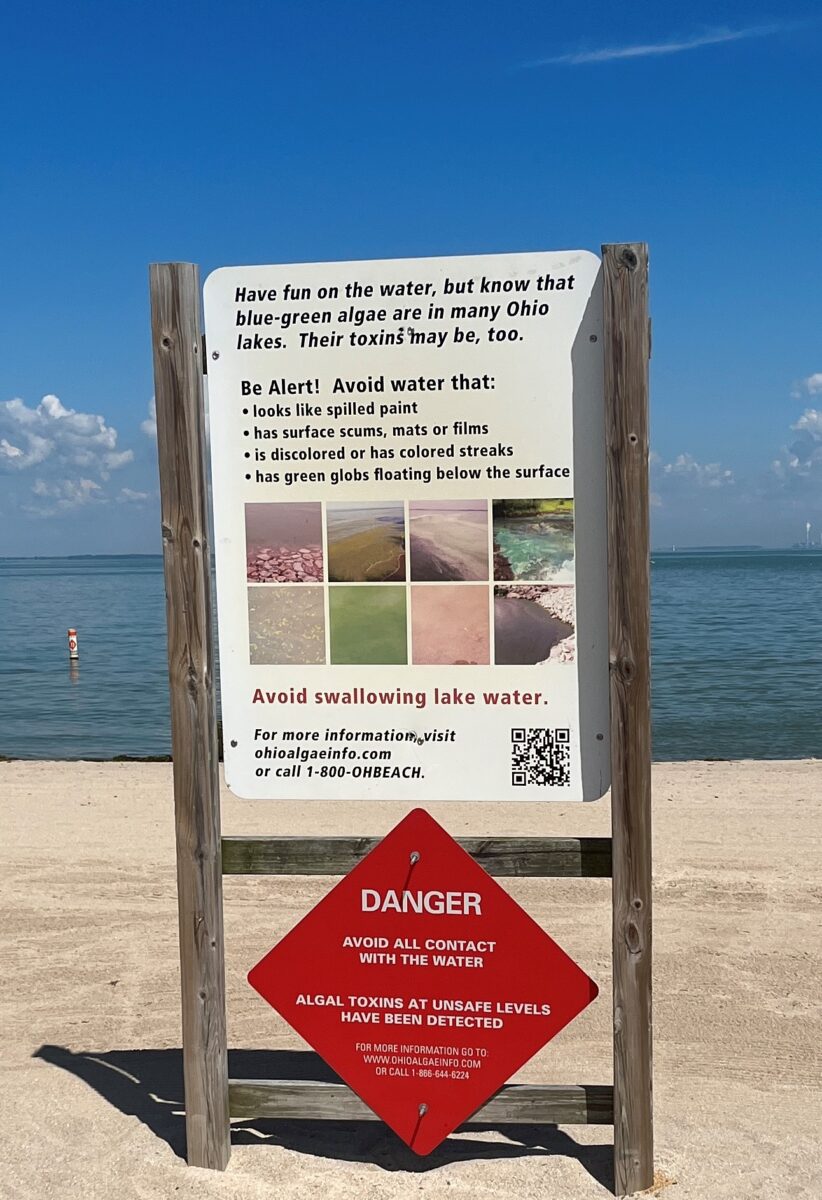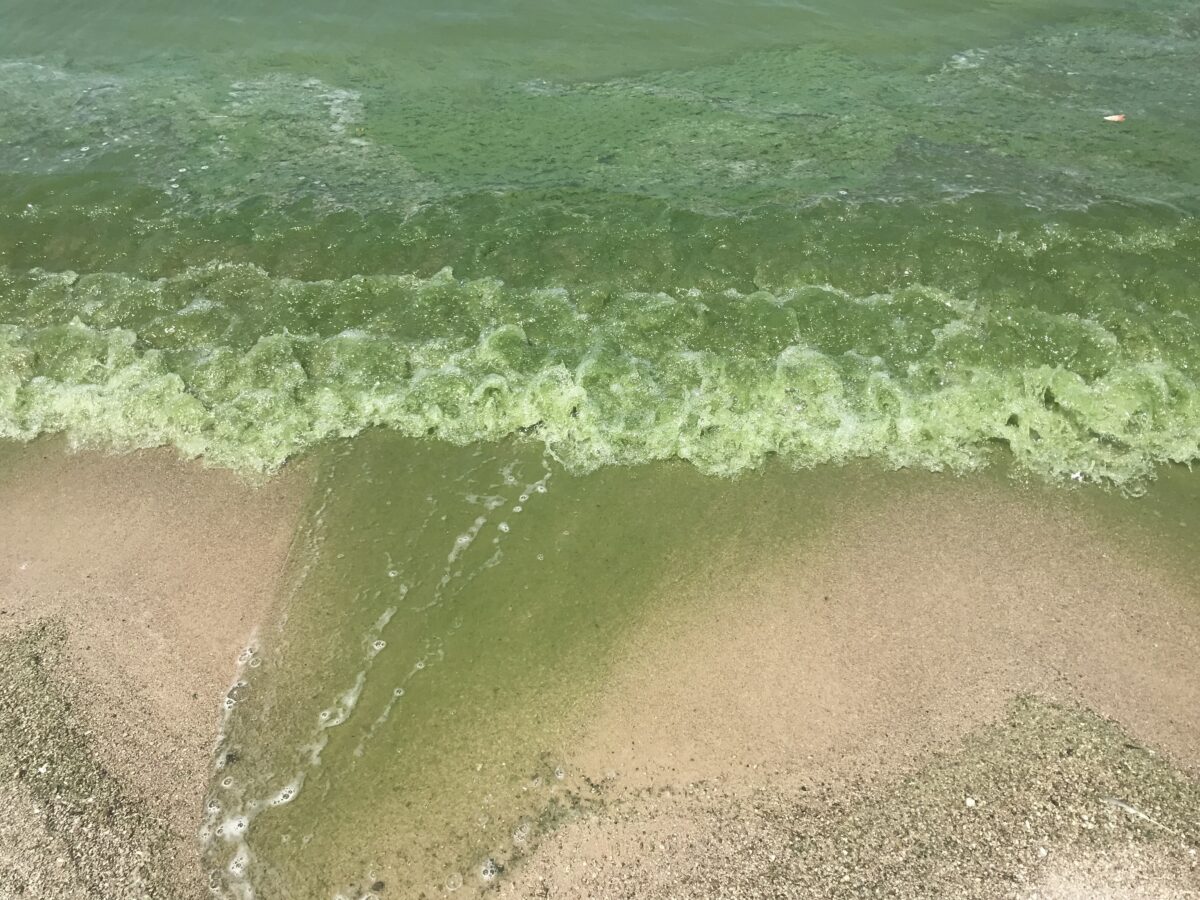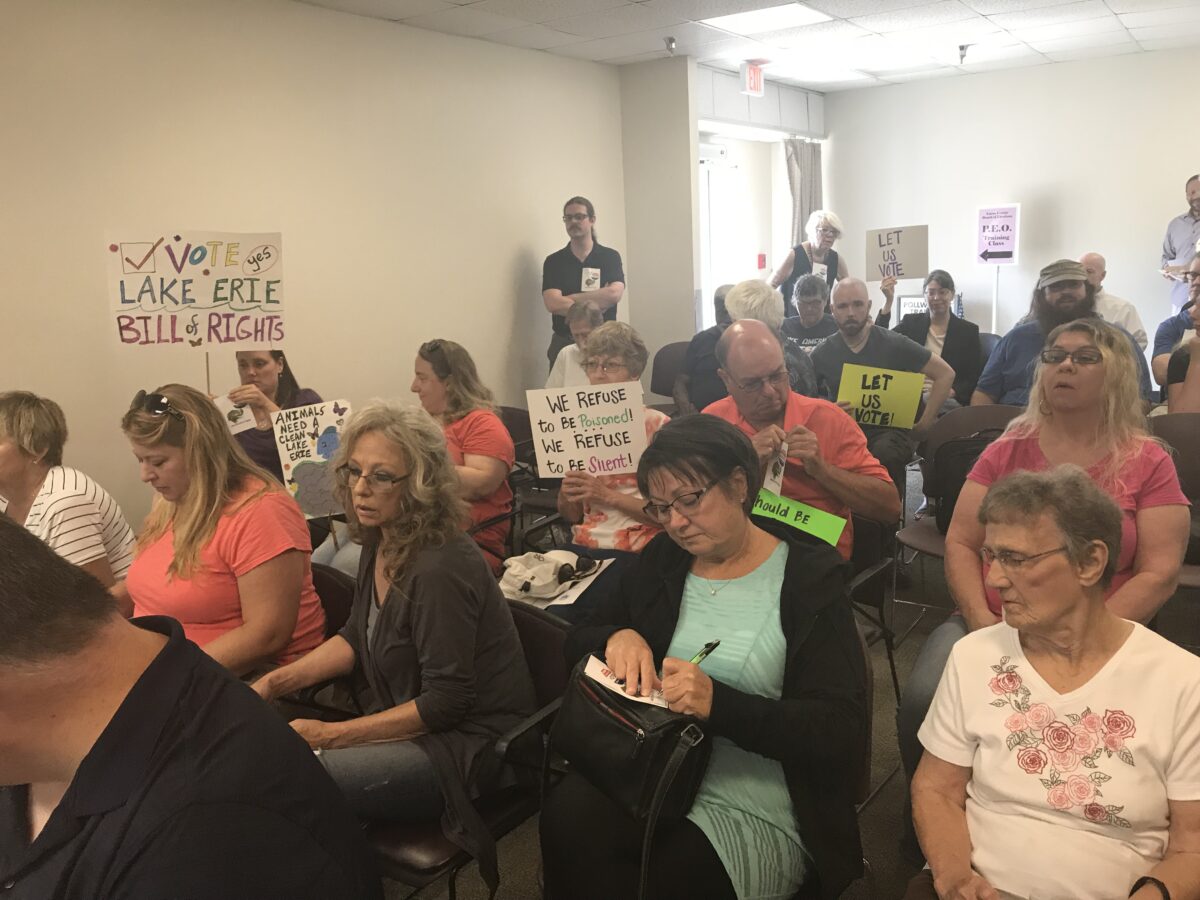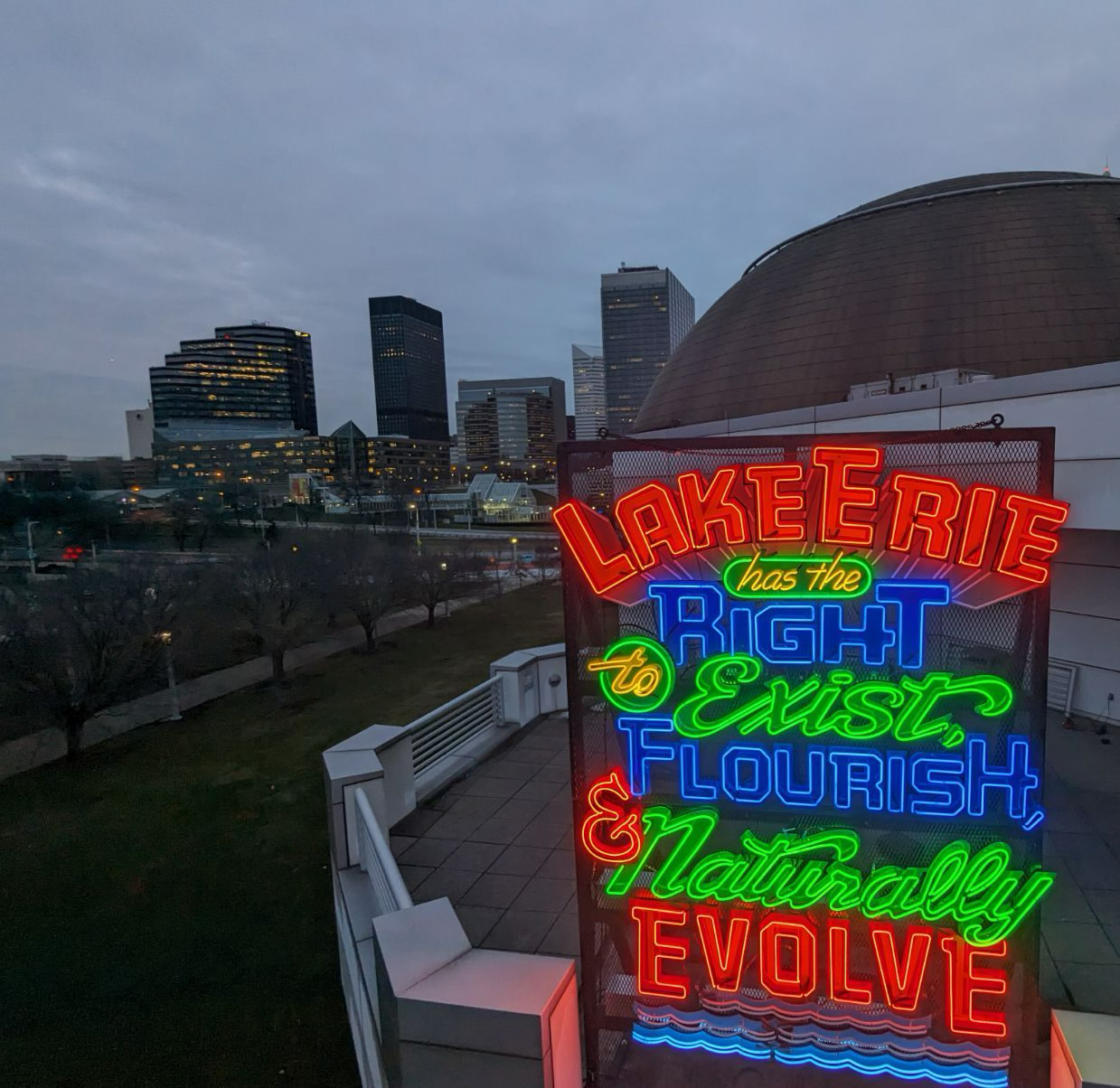The Killing of Lake Erie and Discovering Right Relationship
Published on by Water Network Research, Official research team of The Water Network in Social
The Killing of Lake Erie and Discovering Right Relationship Ten Years Later
BY TISH O'DELL

Share this page
On August 2, 2014, Toledo residents awoke to government alerts to not drink, bathe, use or touch the water coming out of their taps. The water could make adult humans very sick and even worse for babies, children, and anyone with compromised immune systems. Fish, animals, and plants weren’t even considered. What was clear though, this was not a simple “boil alert” as has become commonplace in recent years.
For three long, hot summer days that August in 2014, 500,000 people in NW Ohio learned just how connected to nature they really are. Restaurants, business,es and the local hospital all had to shut down with no water. People lucky enough to have a reliable vehicle could drive the 100+ miles to find store shelves with some bottled water still on them.
That summer, the recurring annual algae bloom in Lake Erie got into the City of Toledo’s water intake. There had been even larger algae blooms in Lake Erie in years prior, but this one got into the city water system. It was almost as if Lake Erie was pleading with the people to help her, to pay attention. Humans with their industrial culture and economies have been using Lake Erie as a waste dump for decades and suffocating her with their chemicals, their manure, and their disregard. In 2014, she made them finally take notice.

Industrial agriculture in NW Ohio, featuring monocropped farms sprayed with RoundUp and other herbicides has combined with the ever growing number of animal factories (confined animal feeding operations, or CAFOs) producing more and more animal manure to bombard the Lake Erie watershed with phosphorus and nitrogen that has caused a recurring algae bloom that is the epitome of planetary overshoot. The constant lure of “progress,” measured as more jobs, more profits and more growth all came to a head that weekend in NW Ohio.
The shock and immensity of the “water crisis,” as it came to be known, propelled people to become active and concerned citizens of the community for a few years afterward. Many environmental groups wrote and confronted elected officials and government regulators. Those government officials made promises and spent money for more testing and more studies. But, the cause of the poisonous algae – nutrient loading in the watershed – is long proven. The prohibitive politics of the situation dictated that money-wasting studies and testing would divert growing public outrage from the obvious changes that must be made to corporate Big Ag practices for there to be a solution.
Several years into this charade, some grassroots folks from Toledo attended a Rights of Nature presentation in Bowling Green put on by several of us at CELDF. They wondered if maybe, this could help Lake Erie. We went for a beer after the presentation and drafted a rough version of the Lake Erie Bill of Rights (LEBOR) on a cocktail napkin. Personally, I wasn’t sure I would ever hear from them again as we all said goodnight that evening in 2017. What I underestimated about this group from the other community groups I had worked with in Ohio, though, was that these residents knew first hand what it meant to a community to be without water. They had experienced that without water, there is no community.
And so a movement arose. We assisted Toledoans in drafting the LEBOR, they collected signatures and we collectively battled the arcane election regulation system to get it on the ballot, even going to the Ohio Supreme Court several times.

Finally, in February 2019, LEBOR appeared on a ballot and the voters approved it by over 61% of the vote. The celebration ended abruptly 12 hours later when a federal lawsuit was filed by a corporate agricultural entity that wanted LEBOR overturned because it might harm a paper entity and its corporate rights.
The system’s veto of the Rights of Nature didn’t end there. In April 2019, the Ohio Chamber of Commerce drafted language to preempt any other Rights of Nature legal attempts from even being raised in any court in the state of Ohio. They delivered this to a legislator, who sneakily inserted it into the budget bill being voted on the next day. The stealth snuffing of the right to raise the issue of whether Nature should have separate and acknowledged status in the courts was complete. Then, in February 2020, a federal judge overturned LEBOR in recognition of the corporate agriculture entity’s “rights” to continue the contamination of Lake Erie that causes algae to prosper, discarding entirely the notion that Lake Erie has inherent rights.
With LEBOR stripped from the options for curtailing Lake Erie’s ongoing assassination, the algae persists, effectively unstoppable. “We know how to predict the blooms. We know how to track them,” says Tom Bridgeman, director of the Lake Erie Center at the University of Toledo. “We know how to provide early warning to the water plants. The water plants know how to handle the blooms … but we haven’t made a lot of progress in preventing them in the first place.”
“We do have a lake water problem, and it’s worse than it was 10 years ago today, and that’s the real shame,” says Toledo’s Mayor Wade Kapszukiewicz. “And I can tell you the folks in Columbus are just not interested in being serious about solving it.”
Despite these troubling circumstances, the sociopolitical landscape is changing. Few people, even many in Toledo, have failed to note the lasting and positive effects caused by their efforts. LEBOR garnered an onslaught of media attention not only nationwide, but worldwide. News agencies from all over the US reported on it, from the New York Times , US News and World Report , CNN, and NPR, to international press like the Guardian , LeMonde , and Maclean’s . It even became a segment on The Daily Show and a clue on Jeopardy! I believe more people were exposed to the idea of Rights of Nature with this one campaign than with all the previous efforts combined. Toledo voters passing LEBOR was one of those “shots heard round the world” moments .

The reverberations continue long after the water crisis of 2014 and the enactment of the LEBOR in 2019. International activist artist, Andrea Bowers, learned about the Lake Erie Bill of Rights and built an entire exhibition around it. A huge neon artwork by her facing Lake Erie at the Great Lakes Science Center in Cleveland shines a literal light on the need to recognize and respect the inherent rights of the lake. A New York state legislator with CELDF’s help has introduced a Great Lakes Bill of Rights in the NY legislature.
Legislators in other states are considering doing the same to change the relationship and ultimately human practices when it comes to the life force that is water.
In 2024, the story of the Toledo water crisis and LEBOR have been included in countless research papers, chapters in books, doctoral theses and are the subject of podcasts and webinars, and documentaries. So, when we at CELDF and those continuing to work on moving the Rights of Nature movement forward reflect on what has happened over the past decade, we know the problems aren’t solved yet, but we heard the cries of Lake Erie and we understand that simply regulating the harms and devastation is not enough. We are and will continue to work on getting her inherent rights to Exist, Flourish and Naturally Evolve recognized, legalized and enforced. We invite you to join us!

Taxonomy
- Governance
- Governance & Policy
- Lake Management
- Water Governance